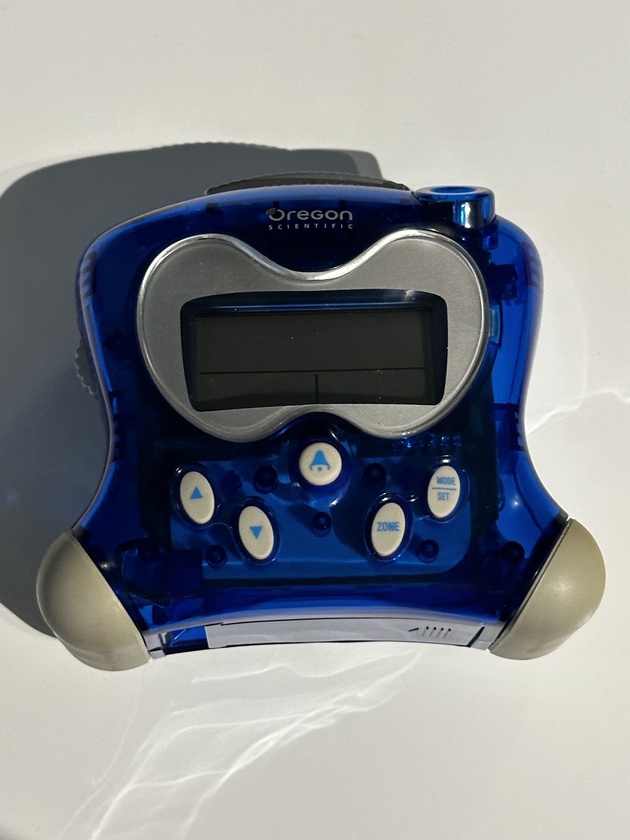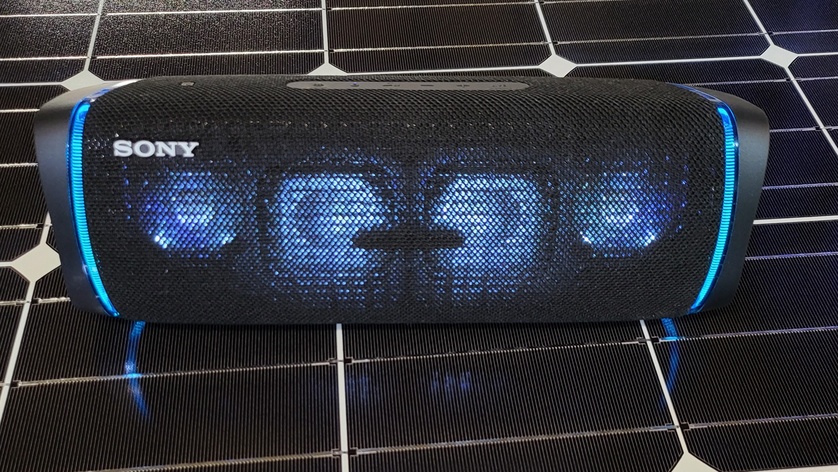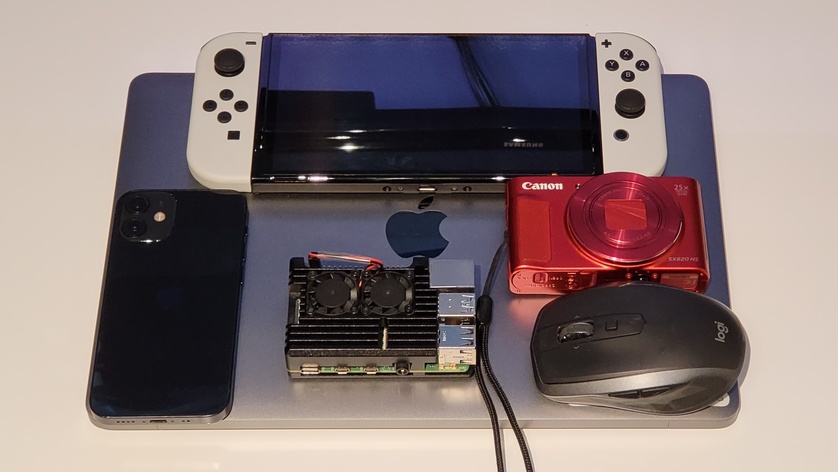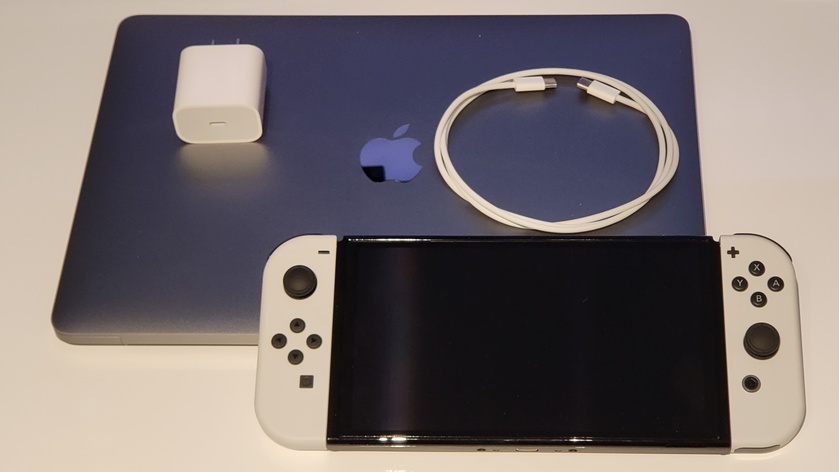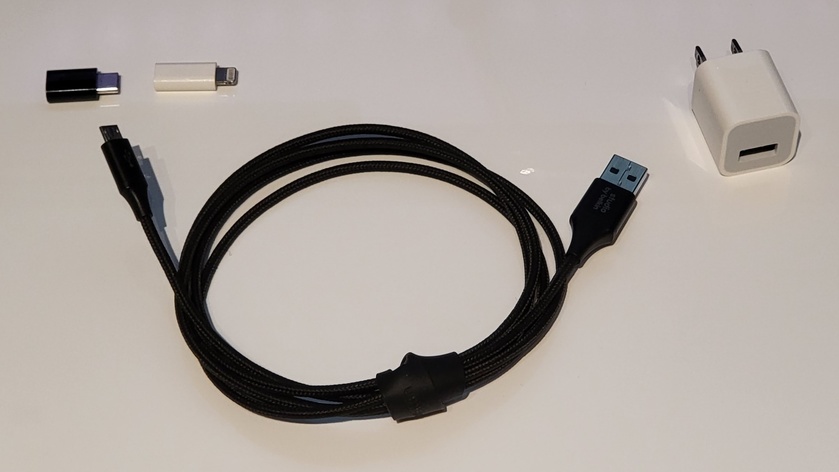Today, I want to talk about the latest development in my personal computing. Over the last several years, I’ve bounced around to several different devices, much to the chagrin of my mental health and my file organization. Within the last year, though, I’ve gotten trapped between my iPhone 12 mini and a Samsung Galaxy Z Fold 3. What is particularly troubling with this scenario is that switching cell service between these two devices (well, between Apple and anything else really) is that iMessage can get confused, so actually switching my service between the devices has been kept to a minimum.
However, I’ve been taking the wrong approach with switching this whole time by starting with my everyday devices and trying to make them work with everything else. This has led to running into issues trying to daily drive the Galaxy and I would get forced back to the iPhone. This time around, I’m taking a different approach. This time, I started by replacing the Apple accessories and services I use before replacing the devices. I’ll go through each one below.
HomePod and HomePod mini
Since I work in a shop, having a good speaker for music is pretty much a requirement, and while the HomePod sounds absolutely amazing, especially when there are two of them in a pair, I find that the inability for it to work with anything other than Apple Music on its own is a major downside. This is especially so when Siri is unreliable at correctly playing what I ask, often either not finding the song/artist/playlist I requested or mis-interpreting what I said and playing the wrong thing. To manually control it, an iPhone, iPad, or Mac is required to have the HomePod play music on its own. With a Windows machine, iTunes can be used to AirPlay music to the HomePod, but I’ve found this to also be unreliable due to random dropouts. Not wanting to use Google or Amazon’s “smart” speakers, I opted to revert to a simple Bluetooth speaker. We had a Sony XB-41 floating around that wasn’t being used, so I switched to that. After finding a good place in the shop to locate the speaker for accessibility and acoustics, I tweaked the equalizer to my liking and now have a suitable HomePod (WorkPod?) replacement, with the added bonuses of instant in-pocket playback control (my iPhone tended to disconnect from the HomePod, so playback controls would control the phone instead), instant playback switching from the speaker to my phone’s speaker and back, and having the music follow me to the car when I leave at the end of the day. As a bonus, the Sony XB-41 uses a fraction of the energy of the HomePod (12 Wh per charge, which lasted 2.5 days, vs. 288 Wh per day for the HomePod), it doesn’t require a music streaming subscription (technically, the HomePod doesn’t either, but it works much better with one), and it can be moved around in the shop because it’s battery powered and doesn’t have to be plugged in to work.
At home, replacing the HomePod minis are more of a challenge due to having smart home equipment, but since these are under a family member’s account and only used for smart home control, they don’t have to be replaced yet. On the Galaxy, I just use the manufacturer apps to control the devices (IKEA switches and window blinds, as well as Belkin WeMo switches).
Apple Music
Next up was Apple Music. Since my entire music library is stored and synced with Apple Music, this is one of the bigger challenges. Roughly half of my music library is subscription-based music and the other half is purchased music. This means that the subscription-based half of my library will cease to be usable once the subscription ends. I had planned to spend the next month migrating out of Apple Music into a combination of Spotify free and a manually-managed MP3 library, but a lightly announced pricing increase for Apple subscriptions bumped that plan up, giving me two days to cross-reference and add the subscription songs to Spotify and purchasing the ones that Spotify didn’t have. The actual price increase was only an extra dollar per month, but the way I discovered this price change left a bad taste in my mouth, so I cancelled early out of principle. I had been wanting to cancel the subscription for a while now because I'm tired of seeing music just vanish from my library as licensing on the songs change. With purchased music, the songs won't disappear from my library.
On my replacement devices, I use MusicBee on Windows and Rocket Player on Android. These both support basic file/folder organization and file tagging, so I built a simple library of my music that gets synced between my laptop, phone, and my home server using SyncThing. Changes, additions, and removals made on one device get synced to the others, sometimes in just a few seconds, so it makes it easy to keep and manage a single library that works across multiple devices without a cloud service or cable syncing. Since both players utilize file tagging, the standard MP3/M4A metadata handles the sorting duties for both apps, keeping the organization consistent. Since a full copy of the library exists on each device, I never have problems of playing purchased music while offline or on multiple devices at the same time (more of an issue). Apple Music is supposed to allow multi-device playback for purchased and matched music, but I’ve found that this isn’t always the case. When asking Siri to play a song or album, it sometimes grabs the subscription version and will pause any other device that’s playing music. This has caused headaches, for example, when my coworkers were using the HomePod and I would try to play an album I purchased in the car from my phone, and Siri would play a subscription version, pausing the HomePod. It’s good in the way that cheating the licensing is a challenge, but it’s bad that Siri plays a subscription version of a song that I purchased. With separate libraries for purchased music (my own files) and subscription music (Spotify), as well as the lack of Siri on Android, this will no longer be a problem. The eventual goal is to own my entire library once again, so Spotify will eventually only be used for music discovery. It will take time to work through my subscription music and get it all purchased (over 1,200 songs at last count).
Apple Card/Apple Pay
This was a recent foray for me. I have a conventional credit card, but I opted to try Apple Pay and Apple Card last year since I had no intention of leaving the Apple ecosystem at the time, and the higher cashback was intriguing. While Apple Pay is a mostly enjoyable way to pay, it’s not a problem for me to go back to a regular credit card and cash. Android has an equivalent system, but I’m opting to not use it. The goal here is just getting everything moved off of the Apple Card and cancelling it.
iCloud apps
Since I have a number of files that use Apple Pages, Numbers, Notes, Reminders, and Keynote, this poses a bit of a challenge. I would need to re-format these documents at some point to free them from Apple. This is something I’m slowly working on, but in the meantime, I can leave these documents on iCloud and use the web apps once I migrate off of Apple hardware. I’ve gone back and forth on the formats to use over the last year (and even the several years prior to using Apple hardware), thus I have a mish-mash of MS office files, LibreOffice, text files, and Apple formats. I’ve tried for years to like LibreOffice, but it just didn’t have a professional enough feel to it, so I’m standardizing my files to Microsoft Office. Seeing as how these formats have been around for pretty much my entire lifetime, I feel comfortable that they are long-term file formats (similar to PDF and .txt), especially since so much of the business world runs on Microsoft Office. That said, should this change, I do have an old machine with a physical copy of Microsoft Office 2007 that can be used if necessary to access files. MS Office apps also work on Android for free on screen sizes less than 10 inches. This allows editing on either screen on my Fold, and because my documents are synced using SyncThing, no cloud subscriptions are necessary (Office on my laptop is a perpetual license).
Apple Photos
This is the hard one, and one that has brought me back to Apple gear a few times. Apple Photos is very hard to beat in what it offers, with powerful editing tools on phones, tablets, and computers, up to 2 TB of cloud storage with per-file selective sync, allowing a choice for minimal on-device storage use or full offline access, and powerful organization capabilities. However, almost none of this is offered for non-Apple devices.
While I’m not thrilled about having a subscription here, I have found a replacement, and that is Adobe Lightroom. I get pretty much a full-featured replacement for Apple Photos with cross-platform software, web access to not only view my library but also edit and organize photos, and expandable cloud storage up to 20 TB. Even if I go back to Apple hardware, this service can follow me and continue to work without having to migrate my data or change my workflows. Since both Adobe Lightroom and Apple Photos/iCloud cost $10/month for my usage, this is a no-brainer switch, especially with Lightroom's more powerful editing tools. Lightroom also allows me to store a backup copy of my original shots on my home server in a very organized fashion, although edits don’t leave the software unless I specifically export an image. I’m developing a workflow to keep file handling to a minimum.
The only downside is that I have to migrate my library out of Apple Photos. I’m currently evaluating my options for what to do with my old photo library. I may just locate the original imports from my old devices, cross-reference the files, and leave the originals in a folder structure on my home server, which means I’d only have to export photos and videos captured using Apple hardware. This would save me from exporting 5 years’ worth of photos and videos in a library that spans a decade.
iMessage
This one is the most controversial. Blue bubbles or green bubbles? On second thought, to the end user, either one works the same. All but three of my contacts have Telegram, and even on iPhone, I consistently use Telegram with my most messaged contacts. They don’t see any change in app functionality if I change devices.
What the heck? I’ll just turn this off and they’ll have to get used to a slightly different color on their screen. It’s worked before.
MacBook Pro M1
Oh, how I wanted this machine to last me a decade. Light, powerful, excellent build quality, and did I mention the 20-hour battery life or the fact it can charge from a USB-A port? Alas, with no native way to run Windows, it’ll have to go. Replacing it (for now) is my Surface Laptop Studio. I’m entertaining the thought of running a NexDock with my Galaxy in DeX mode, but I’m sure a few hours of using DeX seriously will change my mind.
On the plus side, the Surface did successfully replace an iPad Pro. It’s the device I envision Apple will come up with once they finally admit to themselves that MacOS, iPadOS, and the relevant hardware are merging together. I don't have 5 years to wait for that to happen. The Studio gives me that experience now.
iPhone 12 mini
My beloved iPhone 12 mini, replaced by a folding tablet. The Galaxy Z Fold 3 is an absolute powerhouse device that is actually more capable than even the M2 iPad Pros. It’s also a phone, sharing the slender width of the 12 mini with an obnoxiously tall screen that opens to something the size of an iPad mini. It’s complemented by a USB-C port with bi-directional power options (it can provide a charge boost to my MacBook), the ability to run 4 apps simultaneously on the interior screen, expands to a full desktop when plugged into a monitor or TV, and with the latest update, has a trackpad option when folded into what I call netbook mode (90 degree fold with content on the top half of the screen and the bottom half used as a trackpad (complete with a cursor). This is officially known as Flex Mode (found in Advanced Settings under Labs).
Among other benefits, I finally got all the apps working properly on the Fold, so there are no technical or usability limitations by switching to the Fold other than it not fitting into all of my pockets. But the added freedom in software and file management, not to mention the superior cameras, make up for this. It can even wirelessly charge other devices in a pinch. This thing is amazing, and it warrants its own writeup and review.
Why the Switch?
Of course, the overall question is, why switch? Well, it started with frustration in my music library not working properly. An impulse switch to the Fold late last year yielded some interesting results, mostly in that I’m not comfortable spending $2,000 on a mobile device. I returned my initial Fold, then after several months of suffering through more and more limitations with iOS, I caved and purchased another Fold, but this time a used one from BackMarket that was considerably cheaper. It arrived in new condition and has worked flawlessly. Even with the Fold 4 being released shortly after my purchase, my Fold 3 received the latest updates and I enjoy the same new features as the 4, although in a slightly heavier device. However, because I immediately switched phones without switching anything else Apple, this stint lasted about a month and a half before reverting to the iPhone.
Alas, I’m trying again, but the real reasons for me making this current attempt don’t have anything to do with my user experience. This time around, behavior by Apple and MacRumors are the drivers. Apple has decided to weaken Active Noise Cancellation on AirPods Pro and AirPods Max. The only way to prevent this from happening to mine are to not connect them to Apple devices. Apple has also demonstrated that their newest hardware still suffers from arbitrary software limitations and blocks to changing components; storage upgrades in the Mac Studio in this particular instance. The final straw for me from Apple was their quiet price increases on subscription services. Apple Music increased in price by $1 per month on the individual plan, and it took a forum post for me to discover this. No communication was sent out to subscribers. They apparently hoped to just sneak this by people. I don’t like that approach.
The clincher for me was behavior by MacRumors moderation team. In a discussion about iPhone charging practices, I made a comment in favor of an 80% charge option, similar to Samsung’s, and justified it by mentioning the human suffering that exists in the supply chains, namely slavery. I didn’t argue for or against it, just mentioned that it exists and is a good reason to want our devices to last longer, the same as if I would justify it for saving money or helping the environment. This was posted on a forum that has, up to this point, had many lively conversations regarding several social issues such as the environment, politics, and COVID with little to no moderation. Yet, the sentence containing the word slavery was removed from my post, and I was told to keep it to the political sub-forum. Apparently, similar things have happened to other members, as one posted in reply to me describing similar behavior by the moderators, and several other accounts were suspended with no indication of possible reasons by their account history. I had joined and contributed to MacRumors because they weren’t censored in the manner that Apple Support Communities is (On ASC, it is actually a violation of the terms of service to question Apple’s decisions and motives.). Lately, though, that appears to be changing.
Since I’m leaving the Apple ecosystem anyway, I see no need to keep my account there, and will be removing my content in the coming days. I don’t need to put up with this kind of behavior from others. Censoring and changing people’s posts because the topic is uncomfortable is not how to run a forum, and I say that as a moderator of a car owners' forum. The only posts we delete are legitimate spam, and every once in a while, one of the other moderators might move/re-organize a few posts to better categorize the content or break a conversation out of a megathread so that it is easier to find. But no user content is deleted or edited because of something somebody said. There have been arguments, political topics, and even trolls pop up over the years. The most moderation that was done was that one of us would chime in and try to calm the argument or warn trolls about their posting behavior. Eventually, the troll went away. We didn’t have to ban him or delete his posts. Everyone just started ignoring him and that was the end.
While this move to Windows and Android is a work in progress, I've been carrying both phones and I find myself reaching for the Fold first. The MacBook hasn't been touched since I started using the Surface, so maybe I'm finally on the right track to ending my relationship with Apple. There will be more posts that share my successes and troubles, so get subscribed and don't miss out.

